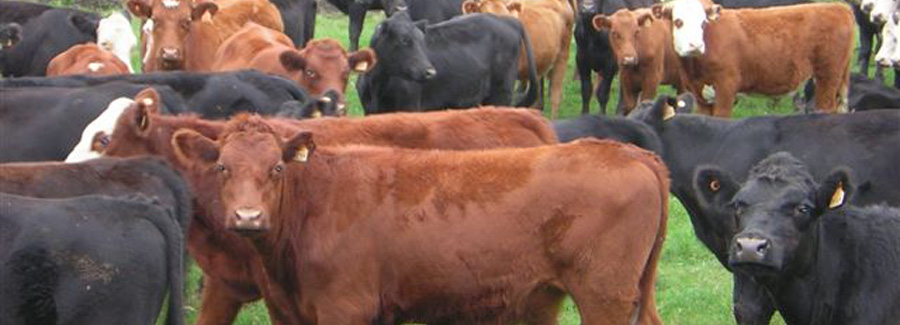

GRAIN-FED vs. GRASS-FED BEEF
The difference between grainfed and grassfed animal products is dramatic. First of all, grass-fed products tend to be much lower in total fat than grain-fed products. For example, a sirloin steak from a grass-fed steer has about one half to one third the amount of fat as a similar cut from a grain-fed steer. In fact, grassfed meat has about the same amount of fat as skinless chicken or wild deer1. When meat is this lean, it actually lowers your LDL cholesterol levels.

Because grassfed meat is so lean, it is also lower in calories.
Fat has 9 calories per gram, compared with only 4 calories for protein and carbohydrates. The greater the fat content, the greater the number of calories.
A 6-ounce steak from a grass-finished steer has almost 100 fewer calories than a 6-ounce steak from a grainfed steer.
If you eat a typical amount of beef (66.5 pounds a year), switching to grassfed beef will save you 17,733 calories a year—without requiring any willpower or change in eating habits. If everything else in your diet remains constant, you'll lose about six pounds a year. If all Americans switched to grassfed meat, our national epidemic of obesity would begin to diminish.
Extra Omega-3s
Although grassfed meat is low in "bad" fat (including saturated fat), it gives you from two to six times more of a type of "good" fat called "omega-3 fatty acids."
Omega-3 fatty acids play a vital role in every cell and system in your body, especially Heart and Brain. For example, of all the fats, they are the most "heart friendly." People who have ample amounts of omega-3s in their diet are less likely to have high blood pressure or an irregular heartbeat. Remarkably, they are 50 percent less likely to have a serious heart attack3 or afflicted with Alzheimer's disease.4
Another benefit of omega-3s is that they may reduce your risk of cancer.
In animal studies, these essential fatty acids have slowed the growth of a wide array of cancers and kept them from spreading.5 Although the human research is in its infancy, researchers have shown that omega-3s can slow or even reverse the extreme weight loss that accompanies advanced cancer.
The reason that grassfed animals have more omega-3s than grainfed animals is that omega-3s are formed in the green leaves (specifically the chloroplasts) of plants. Sixty percent of the fat content of grass is a type of omega-3 fatty acid called alpha-linolenic or LNA.
When cattle are taken off grass and shipped to a feedlot to be fattened on grain, they lose their valuable store of LNA as well as two other types of omega-3 fatty acids, EPA and DHA. Each day that an animal spends in the feedlot, its supply of omega-3s is diminished.9
The graph below illustrates this rapid decline.

Hormones and antibiotics
Raised without antibiotics or antibiotic-free
No antibiotics were administered to the animal during its lifetime. If an animal becomes sick, it will be taken out of the herd and treated but it will not be sold with this label.
No Hormones Administered
Animals are raised without added growth hormones. By Uruguayan law, cattle in Uruguay cannot be given any hormones - so you can rest assured that our beef is as healthy and safe as Nature intended.
Natural Pasture-Raised
Our cattle is raised on native pastures and feeds on grasses and food found in a pasture, rather than being fattened on grain in a feedlot or barn. Pasturing livestock is a traditional farming technique that allows animals to be raised in a humane, ecologically sustainable manner.